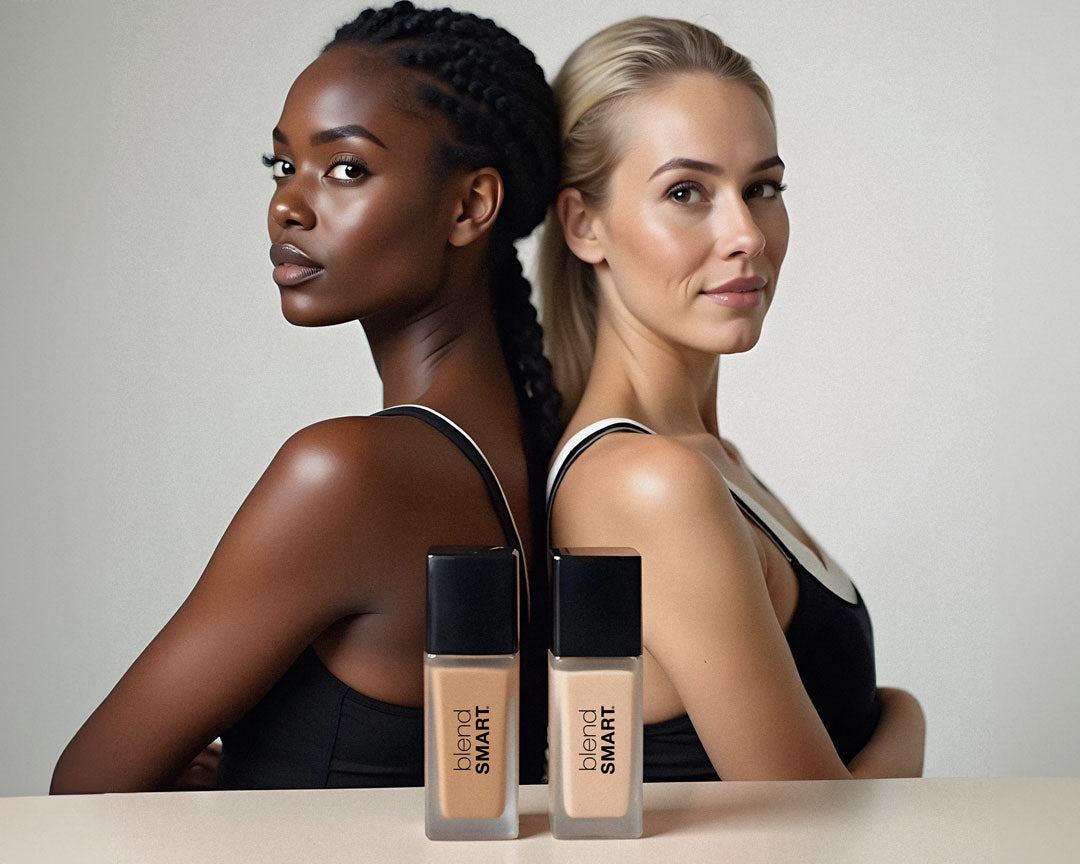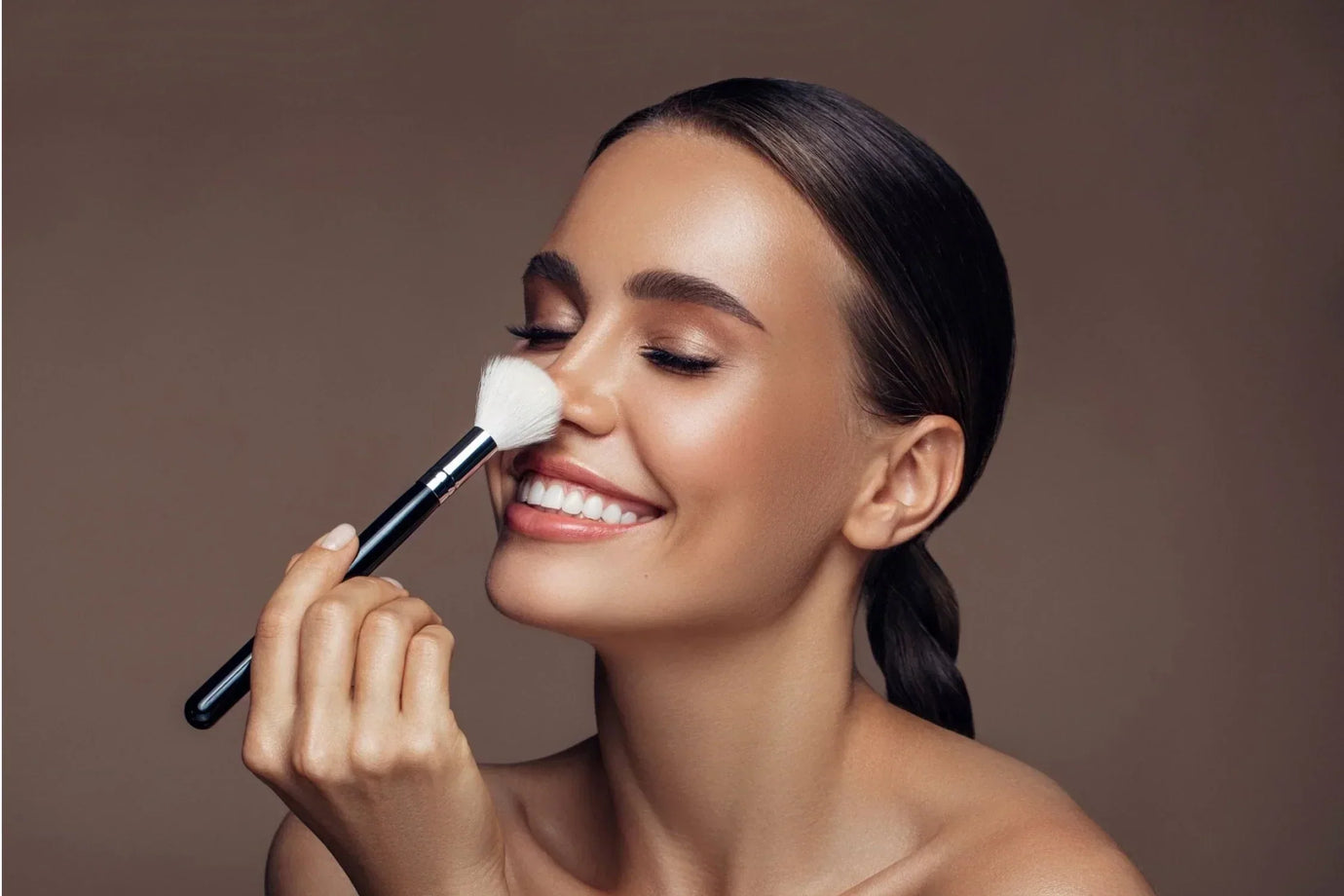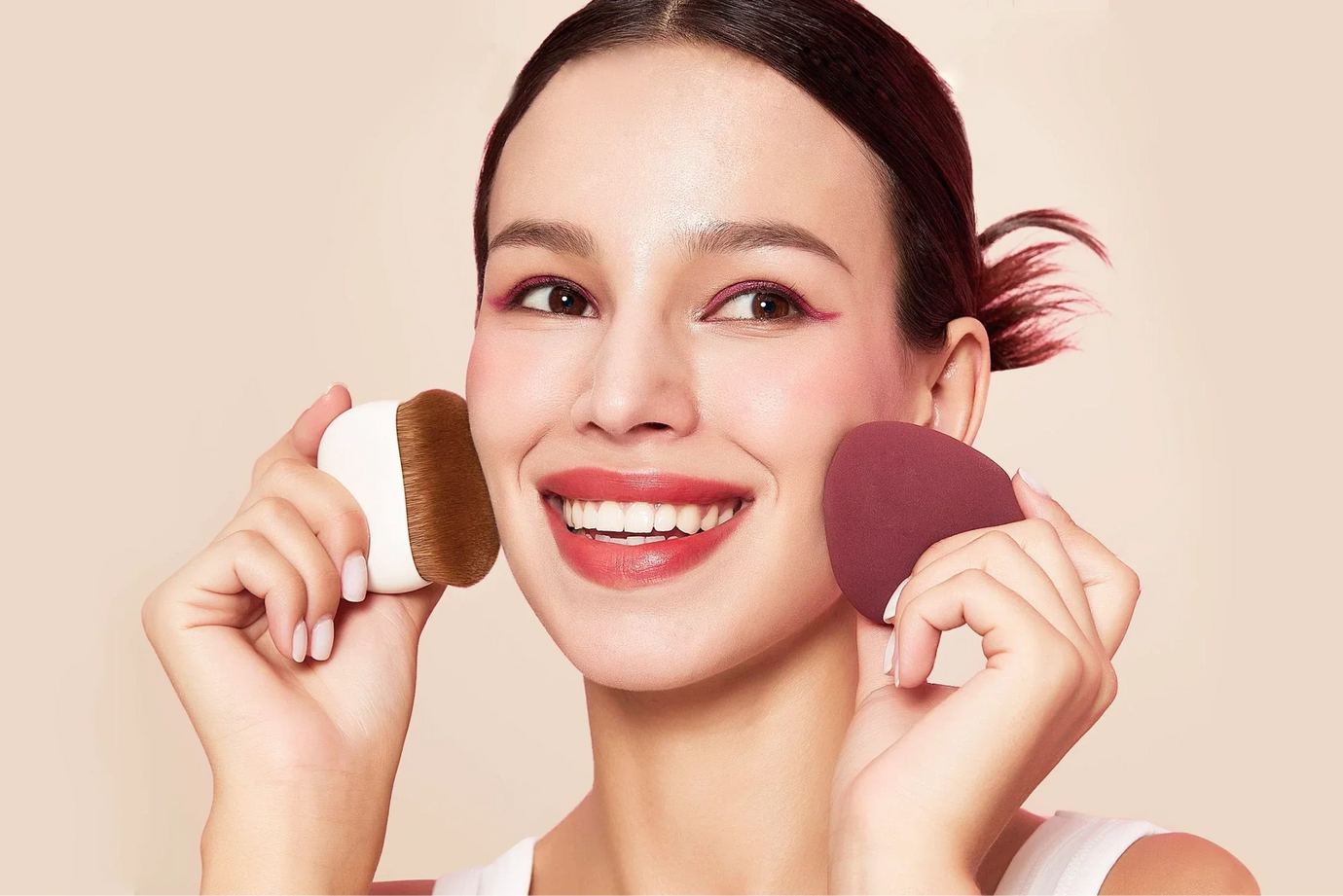How to Make Makeup Last All Day: Secrets from Beauty Experts

Some days, your makeup just… doesn’t stick. You walk out the door feeling great, and a few hours later it’s like your foundation gave up, your blush disappeared, and your eyeliner went rogue. It happens. But it doesn’t have to.
But here’s the thing: makeup doesn’t just wear off because of heat or oil or bad luck. Most of the time, it’s the little things: the way your skin was prepped, the type of formulas you used, how you applied each layer. When those parts work together, everything lasts longer without feeling heavy or overdone.
This guide is all about that system. The pro-backed approach to making your makeup actually stay in place, from the first step of your routine to the last. Whether you’re heading into a long day or just want to stop touching up all the time, here’s how to get your look to stick around.
Table of Contents
- Prep Your Skin for Long-Lasting Makeup
- Choose the Right Products for All-Day Wear
- Set Your Makeup So It Stays Put
- Application Tips for Makeup That Lasts
Prep Your Skin for Long-Lasting Makeup
If your makeup doesn’t last, your skin prep might be to blame. This step sets the tone for everything that follows. So, while it doesn’t need to be complicated, it does need to be intentional.
We break it all down in this full skin prep guide, but here’s what really matters when your goal is staying power:
1. Start with clean skin.
It sounds obvious, but if there’s leftover oil, product, or even a bit of last night’s skincare still hanging around, your makeup is going to slide right off. A gentle cleanse in the morning resets everything and helps your base actually grip.
2. Exfoliate a few times a week.
You don’t need to scrub your face raw, but some light exfoliation makes a huge difference, especially if your foundation tends to cling in weird spots. Chemical exfoliants or enzyme-based ones are great for smoothing things out without overdoing it.
3. Moisturize, but don’t overdo it.
Here’s where a lot of us mess up. You slather on a rich moisturizer thinking it’ll make everything look dewy, but then your foundation starts moving around by 11 a.m. Sound familiar? Stick with something light that sinks in fast.
Hydration = good. Slippery = bad.
Using a brush to apply skincare can help here. It spreads product more evenly than your hands and prevents that heavy, greasy feel you sometimes get from over-applying. If you want to take it a step further, something like the blendSMART Skincare Brush is worth a look. The rotating motion helps your skincare absorb more smoothly, so you’re not dealing with patchy or overly shiny areas before you even start your makeup.

4. Wait a minute. Literally.
Let your skincare sit for a bit before moving on. You want it absorbed, not mixing with your primer and turning into a weird film.
5. And yes, primer matters.
Not all primers are worth your time, but a good gripping primer can change everything. It adds that slightly tacky finish that helps your foundation stay where you put it. I’ve had the best luck with Milk Makeup’s Hydro Grip, especially on long days or in humid weather. It holds everything in place without making your skin feel tight or weird.

Choose the Right Products for All-Day Wear
Before we get into technique, let’s get one thing straight: the products you use matter just as much as how you apply them. If your foundation isn’t designed to last, or your concealer creases no matter what you do, technique alone won’t fix it.
This step is about choosing products that hold up and making sure they actually work together.
1. Start with a foundation that matches your skin and your day.
Some foundations look amazing in the first hour, then break down as soon as you step outside. The key is to find one that complements your skin type and is explicitly labeled as long-wearing, ideally 12+ hours.
Oily or combination skin: Go for oil-free, semi-matte, or soft-matte foundations with keywords like “transfer-resistant,” “shine control,” or “longwear.” These hold up better in humid weather or under stress.
Dry or textured skin: Look for hydrating or satin-finish foundations that still claim long-wear. There are formulas that give you glow and grip. Just avoid anything too slippery or dewy unless it explicitly says it’s long-wearing.
2. Check that your products work together.
Even the best formulas can cause problems if they don’t layer well. Here’s how to avoid that:
Water-based vs silicone-based formulas:
Check the first few ingredients on the label.
- If you see water (aqua) followed by plant extracts, glycerin, or butylene glycol, it’s likely water-based.
- If you see dimethicone, cyclopentasiloxane, or anything ending in -cone or -siloxane in the top 3–5 ingredients, it’s silicone-based.
Try to keep like with like. A water-based primer under a silicone foundation often pills or breaks down. Same goes for mixing silicone-heavy products with dewy, emollient creams. They can slip or bunch.

Match the finish:
Using a luminous foundation and then setting it with a super-matte powder? That’ll create texture and weird separation. Try to keep everything in the same family: matte with matte, dewy with soft-focus, satin with satin.
3. Understand your powders
Powder is one of the most misunderstood steps in makeup. People often use the wrong type or use the right type for the wrong reason and end up with cakiness, patchiness, or no added staying power at all.
Let’s clear it up:
-
Setting Powder vs Finishing Powder
Setting powder is used to lock your makeup in place. It’s applied right after foundation and concealer to reduce shine, prevent creasing, and keep everything from slipping. If your makeup tends to wear off quickly or melt throughout the day, this is the powder that actually makes it last longer.
Setting powders come in different finishes: matte, natural, or even slightly luminous, but the main goal is longevity. They work especially well on oily or combination skin, but can be used on any skin type.
Recommended:

Finishing powder, on the other hand, is more about appearance than wear time. You apply it at the very end of your routine to soften the look of everything: blur pores, reduce texture, and give your skin that smooth, airbrushed finish. It’s great for photography or if you want to diffuse harsh lines, but it doesn’t really “set” your makeup or help it last longer.
Recommended:

If you skip finishing powder, your makeup will still last, it just might look less polished in certain lighting.
-
Loose Powder vs Pressed Powder
These terms refer to the form of the powder, not the function.

Loose powder is lightweight, finely milled, and great for full-face setting. It’s perfect for oil control and baking, but can be a bit messy to work with. It gives you a more seamless, melted-in finish, especially if you’re doing a full glam or long-wear look.
Recommended:

Pressed powder is compact, easy to travel with, and best for quick touch-ups. It’s less intense than loose powder and gives you more control over placement. While it won’t give you the same oil control as loose powder, it’s great for targeted areas like the T-zone or under the eyes.
Recommended:
-
What About Translucent Powder?
“Translucent” just means the powder doesn’t add color to your base. It’s ideal if you want to keep your foundation’s undertone and shade intact. But be careful: some translucent powders, especially loose ones, can leave a white cast, particularly on medium to deep skin tones.
Always test in natural light or flash photography if you’re unsure. If you have deeper skin, try a “translucent” powder that comes in tinted or shade-adapted versions.
4. Setting Sprays
Setting sprays can make or break the longevity of your look, but only if you're using one that’s actually meant to set your makeup. Hydrating or glow mists are lovely, but they won’t keep anything in place. If you want your makeup to last through heat, humidity, long days, or emotional spirals, you need a real fixing spray.
Urban Decay All Nighter? Solid. Charlotte Tilbury’s Airbrush Flawless Setting Spray? I’d sacrifice my firstborn to Charlotte herself for a lifetime supply. It smooths, it seals, it makes your makeup look better at 10 p.m. than it did at noon. If this ever gets discontinued, I’m staging a formal protest.
Set Your Makeup So It Stays Put
Once your base is on, blended, and lightly powdered, don’t stop there. The final step in long-wear makeup is about sealing. These last few moves are what keep everything looking fresh, smooth, and in place all day.
1. Reinforce the areas that move the most.
Even if you’ve set your whole face, some areas need extra backup. If your concealer tends to crease or your nose makeup disappears halfway through the day, go in with a little more powder, pressed, not swept, just in those spots. It’s a small move, but it makes a big difference.
2. Check your texture before sealing it in.
Before setting spray, take a look in natural light. If anything looks too powdery, gently tap over it with a brush or puff. No product, just pressure. You’re locking in whatever’s there, so it’s worth smoothing things out now.
3. Use setting spray like you mean it (but don’t overdo it).
Hold your spray about 10–12 inches from your face and mist in an X or T shape. You want an even layer, not a shower. Too much can disturb your base, especially around the mouth and chin where the product is more likely to separate.

4. Let it air dry.
No fanning, no patting. Let the setting spray settle naturally. This gives it time to do its job and create that flexible hold.
Locking it in doesn’t take long, but skipping it? That’s where most makeup starts to break down.
Application Tips for Makeup That Lasts
You’ve got the right products and a great routine. Now it’s all about how you use them. Even long-wear formulas won’t hold up if they’re layered too thick, blended poorly, or rushed through. These techniques are the difference between makeup that lasts two hours and makeup that lasts twelve.
1. Start with thin, even layers
This is the number one rule. The more product you pile on at once, the more likely it is to crease, shift, or separate. Start sheer and build only where you need it, especially with foundation and concealer. You’ll get a more natural finish and better staying power.
2. Let each layer settle before adding the next
Patience pays off here. Give your skincare a minute to absorb before applying primer. Let your primer sit before moving to foundation. And once foundation is on, take a beat before concealer or powder. That little pause helps each product “grip” instead of sliding over the top of something still wet.
3. Use the right tools for precision and staying power
Fingers are fine in a pinch, but brushes give you more control and more even coverage. The blendSMART Rotating Brush is especially good if you struggle with blending or want your foundation to look like skin, not a layer. Its rotating motion helps press the product in while blending it seamlessly, which is ideal if you’re aiming for thin layers that last.

4. Press, don’t drag
When applying products, especially concealer and powder, use a pressing or tapping motion instead of swiping.
Pressing helps lock product into place and prevents you from disturbing what’s underneath. This is especially helpful around the eyes, nose, and mouth, where makeup tends to break down first.
5. Set cream products before powder
One of the most underrated tricks: use a light mist of setting spray after you’ve finished all your cream and liquid products (foundation, concealer, cream blush, contour) before applying powder.
This helps lock in the cream layer and gives your powder something to adhere to. It adds extra hold without extra heaviness.
6. Powder with purpose
Instead of dusting powder all over your face, focus on high-movement or oil-prone areas: under the eyes, around the nose, chin, and center of the forehead.
Use a powder puff or powder brush to press it into the skin. This method sets the product more effectively and leaves a smoother, more natural finish.
Conclusion
Making makeup last all day isn’t about luck or about one miracle product. It’s the result of a smart routine, built layer by layer: intentional prep, the right formulas, proper setting, and application that respects the structure you’ve built. Skip one, and your makeup might still look good. Nail all four, and it won’t just last, it’ll look better as the day goes on.
No constant touch-ups. No creasing by lunchtime. Just a routine that actually holds up to real life.
Now you’ve got the full playbook. Use it well.


![Best Foundations for Dry Skin [10 Top Picks + Pro Tips]](http://blendsmart.com/cdn/shop/articles/Untitled_design_2.jpg?v=1754050507&width=1380)

